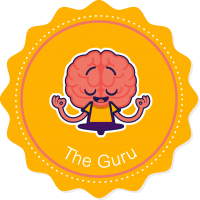According to Wikipedia, “Micro-teaching is a teacher training and faculty development technique whereby the teacher reviews a recording of a teaching session, in order to get constructive feedback from peers and/or students about what has worked and what improvements can be made to their teaching technique.”
Let’s break this down in simpler terms.
As you may already know, ‘micro’ means small. So, essentially, micro-teaching is a teaching situation where the time and number of learners are reduced (made small). This way, it becomes easier for you to understand better the techniques you employ and your colleagues or the observers to offer valuable feedback.
Micro Teaching is conducted to simulate a real-life teaching situation but in a controlled environment. This way, your peers or colleagues can observe all the nuances involved and identify the scope of improvement in your teaching methods.
What a nice approach to learn and grow, right? Now, let’s get to know the brain behind this impactful concept.
Micro-teaching was developed in 1963 by Dwight W. Allen at Stanford University. And, many years later after its development, a review was done to collect evidence for micro-teaching. And you will be surprised to know that it was found to be the sixth most effective method for improving student outcomes.


Microteaching can also be done in a peer-to-peer format.
Here’s how it works:
Select a specific topic and timeframe: Choose a focused topic from your curriculum and allocate a realistic class time, like 40 minutes.
Target audience: Colleagues, not students: Instead of your usual students, the audience for this microteaching session will be other teachers from your department.
Interactive learning environment: During the microteaching session, your colleagues can act as students, asking questions and seeking clarification just like students would in a real class.
This approach offers several benefits:
Teacher as learner: By experiencing the lesson from a student’s perspective, teachers can gain valuable insights into the strengths and challenges their students face with the material.
Anticipating student questions: The questions posed by colleagues can help the teacher anticipate the doubts their actual students might have, allowing them to refine their lesson plan for better clarity.
Colleague feedback: The varied perspectives and inputs from fellow teachers can provide valuable feedback on the teaching approach and content delivery.
Thank you for more information
Micro-teaching: where big improvements come from small lessons. Developed in ’63 by Dwight W. Allen, it’s the mini-miracle for teaching evolution.
Indeed